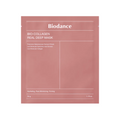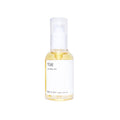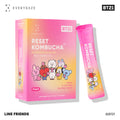Ingredient Focus 8. A little yet extensive Review on Preservatives
When I first moved to United States, I accidently put McDonald’s cheeseburger in the shelf for a week. (I mean literally for a week.) Guess what happened – it was edible, no green mold and it smelled completely fine. Of course, I didn’t devour the yummy looking cheeseburger but my reaction was like “What the…” I am not sure this astonishingly resilient cheeseburger is made with loads of preservatives or not but it was a shocking incident for me because I was grown up in South Korea where breads begin to have green mold in 3 days in the fridge.
Anyway, this article will be an interesting one for the ingredient savvy people. As a cosmetic curator, I have difficult time to avoid all the possible allergens and preservatives. If one doesn’t contain any preservatives, your cosmetic will be expired in 5 to 7 days. It may smell fine but there could be toxins from the secondary chemical reaction in the ingredient. We cannot ignore the toxicity or allergenicity from the preservatives but no doubt, preservatives are necessary evils. Many of classical American and European brands, there is no clear indication of expiration date due to the unclear regulation. They do indicate the usable period after first opening, but this is simply not reliable. I am sure this is one of the reason you believe in Korean beauty products.

<Don't worry, this is PARABEN FREE>
Many of you probably remember the anti-paraben bandwagon. It is raised by several consumer protection organizations and I think it was a fair one. Paraben, especially longer chain parabens showed allergenicity and endocrine related toxicity. Because of its amphipathic property, it disrupts the plasma membrane of the micro-organisms. The concern is, parabens may induce estrogenic activity due to the molecular similarity from phenol group. The fair recognition is always good but the problem is so-called “organic” cosmetic brands use this for their marketing gimmicks. We can easily see the ads, saying they use grapefruit extract as preservative. Well, what we should know, preservatives are generally works with similar mechanism. Meaning, the grapefruit extract described is not freshly squeezed coral colored juice. It is heavily processed to obtain the intended anti-bacterial property.
So, in this article, I have prepared pros & cons and simplified mechanisms for preservatives in the market. This may ease your concerns on preservatives and get away from organic marketing bullshit.

<Butylparaben>
1. The problem kid – Parabens
Probably, parabens have the longest history as preservatives. It is used in food, cosmetics and even in some pharmaceutical drugs. Fungi and bacteria are quite susceptible to parabens thus making this preservative is so tempting. The problem is, as tons of research suggested, this excellent property works as two-sided sword. I am not trying to talk about the allergenicity, which you can ignore if you do not have reaction. Instead, the problem comes from the endocrine related toxicity. The estrogenic activity of paraben is first identified in 1998 and many following researches validated this result.
There are several sub-varieties in parabens according to length of alkyl group. Meaning, there is a parent body and there is different length of carbons in that arm. Generally, as the carbon chain grows longer, it becomes more hydrophobic. In other words, propyl & butylparaben has longer chain than methyl paraben.


<Propylparaben> <methyl-paraben>
It is not only about the length, it also shows better membrane penetration and estrogenic activity. (It does not mean they have same receptor affinity with estrogen but when the chain grows longer, it shows increasing affinity.) So, does it stay in our body forever? The answer is no. Parabens applied to the skin are metabolized by keratinocyte carboxylesterases and the conjugated metabolites are excreted in urine and bile. However, prolonged retention in our body may induce some problematic activities that I have mentioned above.
Parabens have amphipathic property, so it dissolves quite well and shows excellent anti-fungal, anti-bacterial property in a relatively low concentration. EWG rating for methylparaben is 4, and 7 for propyl and butyl derivative. It is rarely used in Korean beauty products any more, but a few has them, seemingly because of the texture. It is still used in several hydrogel eye patches, so check this before if it concerns you.
2. The New Normal – Phenoxyethanol

<Phenoxyethanol>
While parabens are esters of para-hydroxybenzoic acid (one side with hydroxyl group and the other side with carboxylic acid-ether,) phenoxy ethanol is benzene based phenol ether. (You don’t have to know all this though.) It is chemically also amphipathic, just like parabens. Phenoxyethanol is an interesting ingredient. They increase the permeability of the cell membrane, especially for the potassium ion. K+ concentration is always higher inside of the cell for most of the organisms including human, the un-coupled K+ concentration can be detrimental to the micro-organisms. The ionic concentration is closely related to the energy making process (oxidative phosphorylation,) it masses up the metabolism. Anyway, if the parabens are like “puncture-killer,” phenoxy ethanol is more like “hunger-killer.”
The K+ permeability related property leads phenoxyethanol to another problem. The direct exposure with high concentration of phenoxyethanol may leads to neurological problem, especially for infants when ingested orally. If you remember from your high school biology class, appropriate K+ concentration is crucial for action potential. So, this neurological hindrance is understandable. Under current regulation, phenoxyethanol is used up to 1% but most of the Korean companies uses this under 0.5% concentration. I personally think phenoxyethanol is generally safe in the low concentration and its metabolic pathway is very like other alcohols. But allergy issue is always present in us, so if you are allergic to phenoxyethanol, take a close look since it exists in most of the products on the market right now. It is generally considered safe under current regulation as well. If you find products without any preservatives, phenoxyethanol may be hided in the extract or in other ingredient since regulation does not mandate indication of this, if it is a secondary ingredient from other primary ingredient. So test before you buy. Ah, if the expiration date is less than a week, that product is probably completely preservative free.
3. BHT

<BHT>
BHT has phenol as a parent chain like parabens. Before, I have written about this ingredient in other posting but I think it was a little biased in a way, so I decided to mention this in this posting. Well, quite a few US or Europe based companies use BHT in the place of phenoxyethanol or mixture of these two. BHT is a vitamin E derivative, mainly studied as anti-oxidant ingredient and surely it does have anti-oxidant property. Free radicals, aka skin aging inducer, are scary. So, isn’t BHT the preservative that we were constantly looking for, the optimal preservative solution with anti-oxidant property? Well, the answer is no. There is no known benefit of BHT especially as an antioxidant since there were almost no reliable research. It may be a good antioxidant because of its structural similarity to vitamin E which is known antioxidant. But (sorry I hate to say this) there were numerous researches that show the hepatoxicity (liver damage) in higher concentration. There is no accepted and clear mechanism of this liver toxicity though but it seems like from its electrophilic metabolite. Since BHT scavenges peroxy radicals, it is understandable. There are some endocrine related issue in higher concentration as well but under the current regulation, BHT is generally considered safe but I think there should be more studies and safety assessment.
4. Grapefruit Seed Extract

<Grapefruit Seed Extract...?>
Honestly speaking, I get to learn about this ingredient because of the Thayers’ Witch Hazel Toner, which I still love a lot. Their website proudly indicate “All of our witch hazel astringents and toners, except our medicated options, DO NOT have expiration dates. Our witch hazel products are all natural and have a natural preservative (grapefruit seed extract) that does not expire.” Well, I still think it is bullshit. Anything can expire, no matter what type of product it is and especially if it is made without strong preservatives.
The problem is, unlike its name indicate, grapefruit seed extracting process is not a simple extraction and purification unlike many other extracts. Other problem is, it is hard to know as a customer how this extract is processed and what’s the actual chemicals inside of this “natural-looking” preservative. Thanks to the vigilant scientists, spectroscopic analysis showed benzethonium chloride, triclosan and cetrimonium bromide and traceable amount of parabens. Benzethonium chloride is a quarternary ammonium salt. It is known surfactant and antiseptic, but it has known sensory organ toxicity, cytotoxicity and neurotoxicity in relatively low concentration. In September 2016, the Food and Drug Administration issued a ban on nineteen consumer antiseptic wash ingredients, and benzothenium chloride is one of them. Triclosan showed toxicity in endocrinological organs and Cetrimonium bromide disrupts natural iodine level, resulting in problem in thyroid glands. As I mentioned above, grapefruit seed extract is not natural nor completely safe as other preservatives. The most important thing is to notice volume percentage of preservatives, but in grapefruit seed extract, there is no way that we check this. So I am strongly against the use of grapefruit seed extract in cosmetics.











